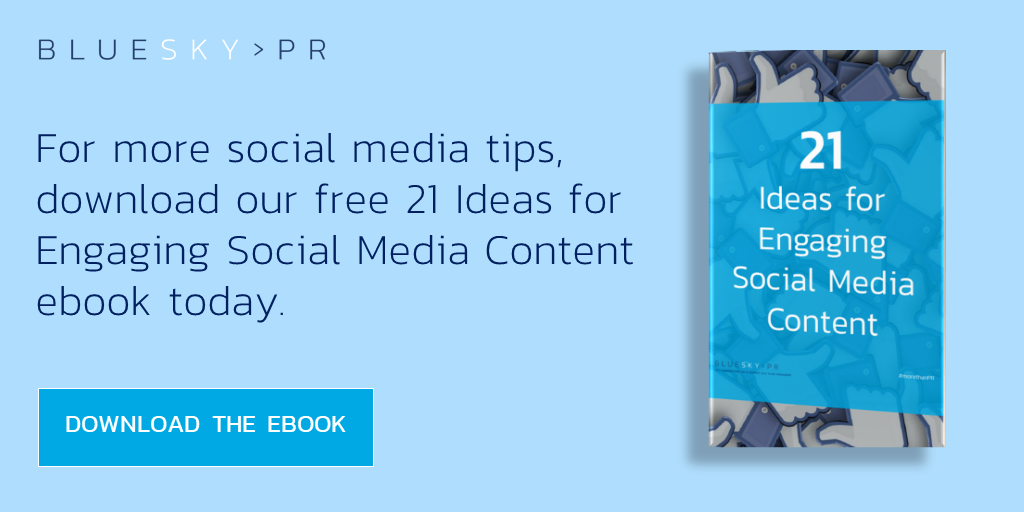During the early days of the pandemic, we ran a live recruitment marketing Q&A clinic - the session below focused on recruiters social media use.
Here's what was covered:
Dan: Today’s topic of discussion will be social media content, so we’ll be looking at some of the questions we’ve received in the last 24 hours on how you can make sure you’re creating engaging social media content.
Steph: Hi Dan.
Dan: I believe we’ve had quite a few questions come in via DM, so Steph could you kick us off?
Steph: That’s correct. So this one is:
I’ve seen a lot of video content at the moment, does this rank higher than other form of content?
Dan: A lot of the platforms won’t specifically say that video content ranks higher but there is a lot of research to suggest it does. So, if I just go through some of the platforms, so for example if you login onto LinkedIn, a lot of the content you’ll see when you’re scrolling through your feed is video content - particularly from personal profiles. So the data I’ve personally seen, and in my own experience, if you’re producing some talking head video content and you push it out on your personal profile it does get a lot more reach than other content such as test only posts or imagery.
 When you’re a company page on LinkedIn, you don’t get as big a reach as the personal profiles would be getting for their content. What I’ve found works really well is if you use a personal profile and then cross share that to a company page, that works really well in terms of having more reach.
When you’re a company page on LinkedIn, you don’t get as big a reach as the personal profiles would be getting for their content. What I’ve found works really well is if you use a personal profile and then cross share that to a company page, that works really well in terms of having more reach.
With Facebook, video content does get a big boost in the feed but in particular, Facebook Live does very well. And if you've tuned in and you’re not really sure what Facebook Live is and you’ve heard a little bit about it, basically Facebook Live enables you to go live on your Facebook page pretty much how we’re doing here on Twitter and Periscope right now. And the benefit of that on Facebook Live if you’ve got a large audience on Facebook, on the app on your phone if one of the pages you follow goes live you get a notification. And if you’re a user and you’re scrolling through your feed, all the Facebook lives that are happening go right to the top of your feed. So it’s worth looking at how you can use video content across the platform, whether that’s recorded or live video, it is a lot more engaging and particularly the live aspect, as we’re seeing right now, it allows people to send in questions the day before or during as well which makes it that much more interactive, particularly if you’re a recruitment firm, you want that personal approach rather than being a faceless logo on social media. It really allows people to see the recruiters and the whole team and really, helps build that repartee at the initial stage.
Steph: Ok great. The next one that I’ve got is:
What sort of content would make us stand out from the crowd right now with so much going out on social media?
Dan: Ok. I mean one of the first things I’d recommend, myself and I think Vickie  discussed this a couple of weeks ago or more on one of these Twitter Q&As is positive news stories. They work really, really well because no matter what platform you’re on at the moment Twitter, Facebook, LinkedIn, a lot of the stories you’re scrolling through are all to do with the negativity around the Coronavirus pandemic and its effect on various industries. But something I recommend, and I use with a lot of our own clients, is say if you’re a healthcare recruiter, obviously the health and social care sector is under a great amount of stress but a lot of publications are deliberately seeking a lot of positive news stories to do with nurses fundraising and what care homes are doing to entertain their own residents. So, if you can try and source some positive content from the sectors you recruit in, that works really really well because it stands out from the crowd and people are craving that positive news at the moment. It ends up on a small scale getting a large amount of engagement and shares, with people tagging other people in. So, it works really well there.
discussed this a couple of weeks ago or more on one of these Twitter Q&As is positive news stories. They work really, really well because no matter what platform you’re on at the moment Twitter, Facebook, LinkedIn, a lot of the stories you’re scrolling through are all to do with the negativity around the Coronavirus pandemic and its effect on various industries. But something I recommend, and I use with a lot of our own clients, is say if you’re a healthcare recruiter, obviously the health and social care sector is under a great amount of stress but a lot of publications are deliberately seeking a lot of positive news stories to do with nurses fundraising and what care homes are doing to entertain their own residents. So, if you can try and source some positive content from the sectors you recruit in, that works really really well because it stands out from the crowd and people are craving that positive news at the moment. It ends up on a small scale getting a large amount of engagement and shares, with people tagging other people in. So, it works really well there.
But other content that works really well – infographics, there’s a lot of recruitment agencies that do a lot of great stuff in terms of getting survey data  and things like that but when it comes to pushing it out on social media they often just post out the link to the blog, whereas if you actually click through and look at the blog they’ve got a lot of great data there they could use to produce their own graphs and charts. So, look at how you can really captivate your audience and stop them from scrolling past your content by putting some of the graphs in your post, particularly ones that show a big uplift or a big contrast because those work really really well.
and things like that but when it comes to pushing it out on social media they often just post out the link to the blog, whereas if you actually click through and look at the blog they’ve got a lot of great data there they could use to produce their own graphs and charts. So, look at how you can really captivate your audience and stop them from scrolling past your content by putting some of the graphs in your post, particularly ones that show a big uplift or a big contrast because those work really really well.
The other thing I’d say is branding. Again, I don’t know about you Steph but there are a lot of recruitment agencies out there that don’t make use of their brand. They might not use their full brand palette when they’re producing imagery or social media. Or they might just use a couple of fonts that aren’t even their brand font or something familiar with that brand to give that realisation, oh hang on a second that’s not part of their branding. If we go back to the graphs and charts example, if you do a fully branded graph and chart with all your branded colours and branded fonts, it helps people build rapport with your brand and really recognise it from the start. Again, rather than just posting out your blog, create a nice image for the blog as well and use text  overlays and some of your branded colours as it really drives brand recognition at an early stage. Personally it’s one of my biggest bug bears when I scroll through feeds in the recruitment industry and other industries – when people don’t make use of their brands because at the end of the day, if you want to stand out in people feeds and people minds, you need that strong brand image. So, I always recommend, look at your branding, and implement that across all your social media imagery because that will really help you stand out there.
overlays and some of your branded colours as it really drives brand recognition at an early stage. Personally it’s one of my biggest bug bears when I scroll through feeds in the recruitment industry and other industries – when people don’t make use of their brands because at the end of the day, if you want to stand out in people feeds and people minds, you need that strong brand image. So, I always recommend, look at your branding, and implement that across all your social media imagery because that will really help you stand out there.
Steph: Yeah, I think that’s a really interesting point in terms of building familiarity. It’s something we talk about a lot. A big part of brand building is creating that familiarity in the market so people gravitate towards your brand. So, the next question we have is:
Should we replicate the same content across Twitter, LinkedIn, and Instagram?
Dan: I would say no. And there are two main reasons for this. The first one is that each platform is slightly different in terms of the algorithm and the content it lets you produce. So, again, for example, if you look at Instagram it’s a very visually driven social media platform, if you compare it to LinkedIn, LinkedIn’s a lot more professional, you’ve those big contrasts in core audience, its purpose and how it works. So, across all your platforms not only do you have the differences in what they allow you to do but again you’re going to have a  difference in your audience. A lot of recruitment agencies tend to use Instagram for employer branding purposes. Instagram tends to also have a younger audience in general compared to Twitter and LinkedIn for example. So, it’s all about weighing things up and trying to get a deeper understanding of your audiences and for that the analytics of each platform really provides you with a lot of data. But not only that, I would also get your recruitment consultant teams involved, picking up the phones, engaging with candidates and clients just you know to get them to ask them the questions such as which social media platforms they are using at the moment because that provides you with a bit more rich data. This gives you a bit more relevancy because you can see the audience you re directly talking to at the moment where they are. So, I definitely recommend having a different approach for each audience because that way you really maximise your ROI there.
difference in your audience. A lot of recruitment agencies tend to use Instagram for employer branding purposes. Instagram tends to also have a younger audience in general compared to Twitter and LinkedIn for example. So, it’s all about weighing things up and trying to get a deeper understanding of your audiences and for that the analytics of each platform really provides you with a lot of data. But not only that, I would also get your recruitment consultant teams involved, picking up the phones, engaging with candidates and clients just you know to get them to ask them the questions such as which social media platforms they are using at the moment because that provides you with a bit more rich data. This gives you a bit more relevancy because you can see the audience you re directly talking to at the moment where they are. So, I definitely recommend having a different approach for each audience because that way you really maximise your ROI there.
Particularly, for example, LinkedIn again, you’re going to tend to have an audience there that’s a bit more professional, whereas you recruitment agency might not fit naturally on Facebook if you’re at that Exec level. So, it’s important to think about what platforms you should be on from the outset, so you have a presence on the ones where your audience is, because one of the worse things you can do is spread yourself too thinly.
Steph: Ok great. One’s just come in which is:
We’ve always used Instagram as a channel that’s light-hearted and funny, is that inappropriate at the moment?
Dan: I wouldn’t say it was because I think as I touched upon before; a lot of people are craving that positive and light-hearted content. So, as long as your content serves a purpose in terms of providing them with that and isn’t too farfetched or controversial then definitely show that sort of light-hearted  approach in your content. Whether that’s people working from home, a lot of companies are doing sort of dress ups on a Friday for their meetings. Things like that that helps show the personal approach of your recruitment firm. But also in the past couple of weeks or so, recruitment firms who might have used Instagram for strictly light-hearted content, they’re introducing other elements as well. They recognise that during this pandemic people ae spending a lot more time across all of the social media platforms, so not only are they providing them with that type of content but they are also looking at sharing occasional job ads, promoting some of their CV tips, eBooks and things like that. So, I would definitely say monitor engagement levels and see how you can also offer value in different ways on Instagram because more and more people are spending their time there at the moment so definitely cater towards their needs and take a value led approach with your content.
approach in your content. Whether that’s people working from home, a lot of companies are doing sort of dress ups on a Friday for their meetings. Things like that that helps show the personal approach of your recruitment firm. But also in the past couple of weeks or so, recruitment firms who might have used Instagram for strictly light-hearted content, they’re introducing other elements as well. They recognise that during this pandemic people ae spending a lot more time across all of the social media platforms, so not only are they providing them with that type of content but they are also looking at sharing occasional job ads, promoting some of their CV tips, eBooks and things like that. So, I would definitely say monitor engagement levels and see how you can also offer value in different ways on Instagram because more and more people are spending their time there at the moment so definitely cater towards their needs and take a value led approach with your content.
Steph: Great, thanks Dan. The next one is about Facebook.
We’ve never really used Facebook as a company before but we can see it’s increasingly popular, what’s changed? And should we be using it now?
Dan: Ok, so I actually did a blog on this topic that went live I believe on Monday. But we’ve definitely seen for various recruitment firms that we’ve spoken to and manage social presences for that a lot more people are spending time on Facebook. Of all the social media platforms it’s arguably been around  the longest and it’s the easiest way for friends and family to stay up to date with each other to see how everyone’s coping with the lockdown, the overall pandemic - staying in touch with each other a lot more frequently. I know last year there were a lot of media reports saying Facebook use was in decline and it’s used more by 40 and 50 plus but this climate has certainly brought everyone back onto Facebook to engage with each other. And that does present a very good opportunity for recruitment forms because if your audience is there then you can really sort of target them. Again look at various ways and how you can add value to your audience, so don’t just think oh everyone’s on Facebook now let’s just put up job post after job post because that’s not the type of content that gets a lot of engagement on Facebook, it’s all about value.
the longest and it’s the easiest way for friends and family to stay up to date with each other to see how everyone’s coping with the lockdown, the overall pandemic - staying in touch with each other a lot more frequently. I know last year there were a lot of media reports saying Facebook use was in decline and it’s used more by 40 and 50 plus but this climate has certainly brought everyone back onto Facebook to engage with each other. And that does present a very good opportunity for recruitment forms because if your audience is there then you can really sort of target them. Again look at various ways and how you can add value to your audience, so don’t just think oh everyone’s on Facebook now let’s just put up job post after job post because that’s not the type of content that gets a lot of engagement on Facebook, it’s all about value.
Look at the current trends in the markets that you’re recruiting for, sharing blogs and curating content, creating content, looking at video interviews and things like that and cater towards that because that’s what people are looking for at the moment, they want to know how to do video interviews, they want to know how the sector they are looking to progress their career in is going to be effected by this. Also, I would add with Facebook, it’s always traditionally quite hard to reach your audience organically because the reach has plummeted in recent years because they are pushing everybody in terms of pages and businesses to use Facebook advertising. So, I would recommend if you’re going to focus on Facebook to reach your audience during this current climate, put some money behind paid social and test small amounts and that way you’ll be able to reach people that you wouldn’t get with your organic content, so then you can reach your own followers with the organic and those you’ve never reached before with the Facebook advertising and that offers you the best of both worlds. If you’re recruiting for sort of low-level, mid-level, and graduate then Facebook is very much a great idea right now to focus on, build up a candidate base, and generate engagement.
Steph: Great, thanks Dan. I think that’s the last one to come in. I certainly found that really useful. Thank you for answering all those questions.
We also wanted to say that we’ve had quite a few people contact us over the past few weeks saying they’d quite like to join the Wednesday Q&A but weren’t able to, so was there an opportunity for this to run on any other days? So we’ve done all of April on Wednesdays and for the month of May we are going to move it to a Monday and see how that goes. Obviously, for anyone who can’t join live, the previous week’s Q&A transcript will be posted to our website.
We’ve also spoken to quite a lot of people about doing training and webinars, s we thought it might be quite a nice idea to alternate, so every other week we’ll do a Q&A then the following week we’ll do a webinar or a training session. So, we just wanted to let everyone know that as well.
Dan: Yes, that’s fantastic, so just to clarify that’s from the 1st Monday in May at 12pm we’ll be moving the Q&A to bi-weekly.
Steph: Yes, perfect.
Dan: All right. Steph, thank you so much. And anyone who’s watching this right now or on-demand later on, if you’ve got any questions then contact us via Twitter or using the contact details on our website and we’ll be happy to help. Thank you very much.
Steph: Bye.



